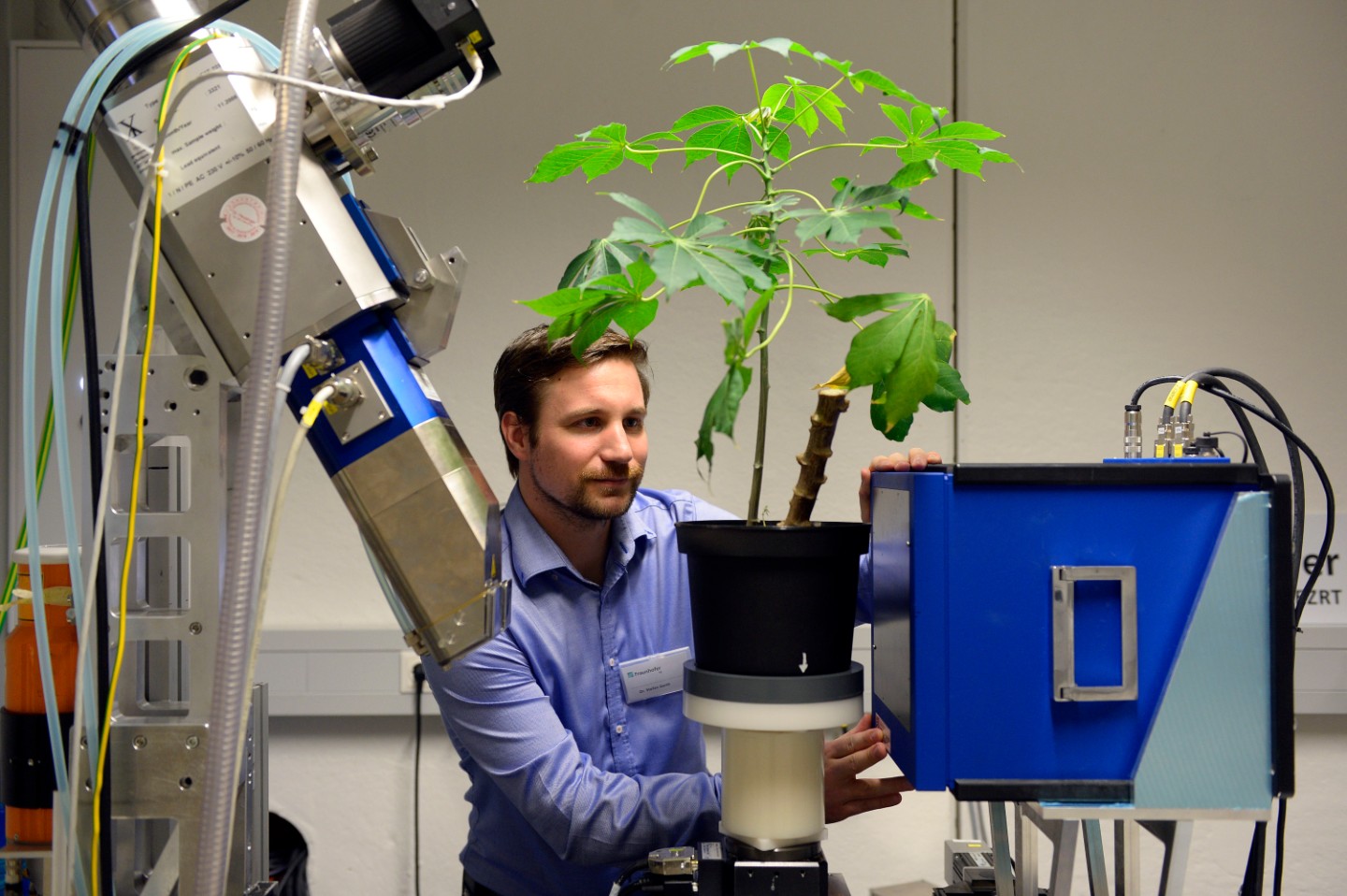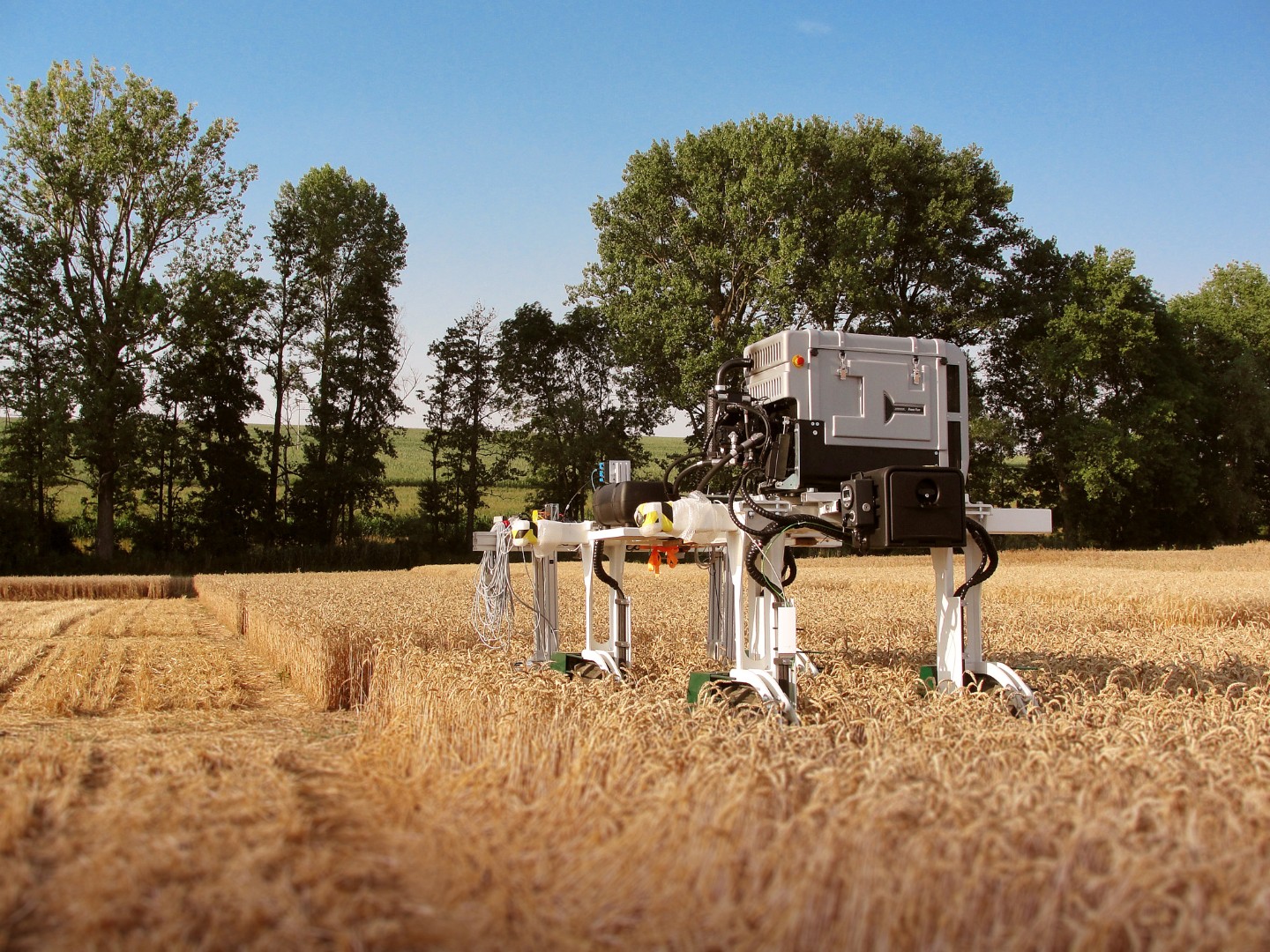

How should plant breeders respond to climate change? Fraunhofer researchers use X-ray technology to identify crops that are more resistant to heat and dry conditions.
Stefan Gerth began x-raying potatoes seven years ago. Now he and his team x-ray entire fields of wheat. “Our goal is to monitor the growth of the tubers without having to dig them up,” explains the group manager at the Fraunhofer IIS Development Center for X-Ray Technology EZRT. The researchers cultivate potatoes in flowerpots. “By x-raying the plants on a regular basis, we were able to observe how heat and drought affect tuber formation,” explains Gerth. “Our X-ray systems help breeders select crop varieties.”
The team is also committed to the question of what a wheat ear looks like on the inside. “From the outside, there is no way of telling how many grains of wheat a given ear contains,” says Gerth. Plant breeders have always had to thresh each ear individually and then count the grains. With the automated CT system of Fraunhofer EZRT, thousands of ears can now be examined for a wide range of traits within a short space of time. The breeders involved in the project use the data for phenotyping, which documents the traits used to determine which plants are selected for further breeding. Thanks to Stefan Gerth and his team, traits that were once hidden can now be examined for the first time. With a CT system that automatically x-rays flowerpot after flowerpot in the greenhouse, Gerth has now put the technology to use.
The latest Fraunhofer EZRT development can even be used to x-ray entire wheat fields: DeBiFix is a long-legged, four-wheeled vehicle that scans the ears as it moves slowly along the field. “By performing consecutive X-ray scans, breeders can monitor the growth of grains in the ears,” explains Gerth. “This allows them to observe how individual varieties react to heat or drought in situ.” However, Gerth is still a long way from declaring “mission accomplished.” He would like to develop a technology that can be used to monitor the growth of potatoes and roots outdoors – with a view to providing even greater support to plant breeders in their response to the challenges of climate change.